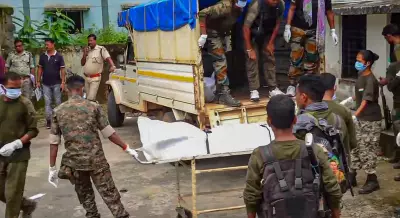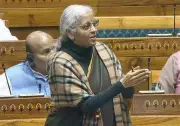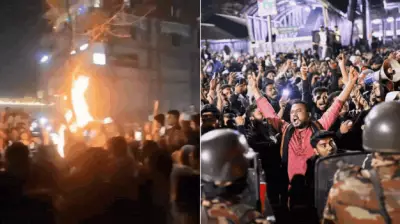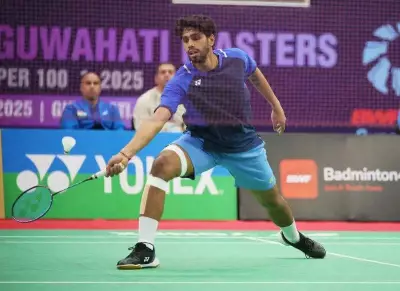Politics
3 Naxalites, Including Woman, Killed in Sukma Encounter with Security Forces
A woman among three Naxalites was killed in an encounter with security forces in Chhattisgarh's Sukma district on December 18. Police confirm the operation was based on specific intelligence.
Business
Haldiram's Attracts L Catterton Investment, Eyes IPO & Jimmy John's India Entry
US private equity giant L Catterton invests in Haldiram's, boosting the snack major's global ambitions and IPO plans. The firm is also in talks to bring Jimmy John's to India. Read more.
World
Bangladesh Unrest: Protests Erupt After Youth Leader Hadi's Death, Anti-India Slogans Raised
Bangladesh faces nationwide protests after the death of pro-democracy leader Sharif Osman Hadi. Demonstrators target Indian diplomatic premises, media houses, and Awami League offices. Read the full report.
Entertainment
Arjun Rampal Reveals Tough Transition from Modeling to Acting Amid 'Dhurandhar' Success
Arjun Rampal opens up about his difficult shift from modeling to Bollywood, contrasting the skills needed for each profession. The actor is currently celebrating the success of his latest film 'Dhurandhar'. Read his full story here.
Sports
Lifestyle
Health
Gurgaon Sees Season's Coldest Day, Temp Drops 7°C
Gurgaon shivered as temperatures dropped sharply, recording the season's coldest day with dense fog. IMD issues orange alert for Haryana. Read for details and forecast.
Bengaluru Pigeons: Govt Denies Risk, Doctors Warn of Lung Ills
Bengaluru residents face a growing health threat from pigeons, with doctors reporting a surge in respiratory illnesses. The government, however, denies any recorded infections. Learn about the risks and expert warnings.
Third tiger death at Alipore Zoo sparks medical care concerns
A young Royal Bengal tigress dies at Kolkata's Alipore Zoo, marking the third tiger fatality in three months. Experts question medical protocols as an investigation is ordered. Read more.
Amritsar Hospital Launches First 3D Printing Tech
Amritsar's Ivy Hospital launches North India's first in-house 3D printing lab for precise surgical planning. This medical innovation transforms complex orthopedic and cancer treatments.
Shimla Doctor's Vital First Aid Steps for Dog Bite Victims
A senior Shimla doctor outlines critical first aid steps for dog bites: stay calm, wash the wound with soap for 15 minutes. Learn how to prevent rabies and when to seek immediate medical help.
Technology
Get Updates
Subscribe to our newsletter to receive the latest updates in your inbox!
We hate spammers and never send spam









































